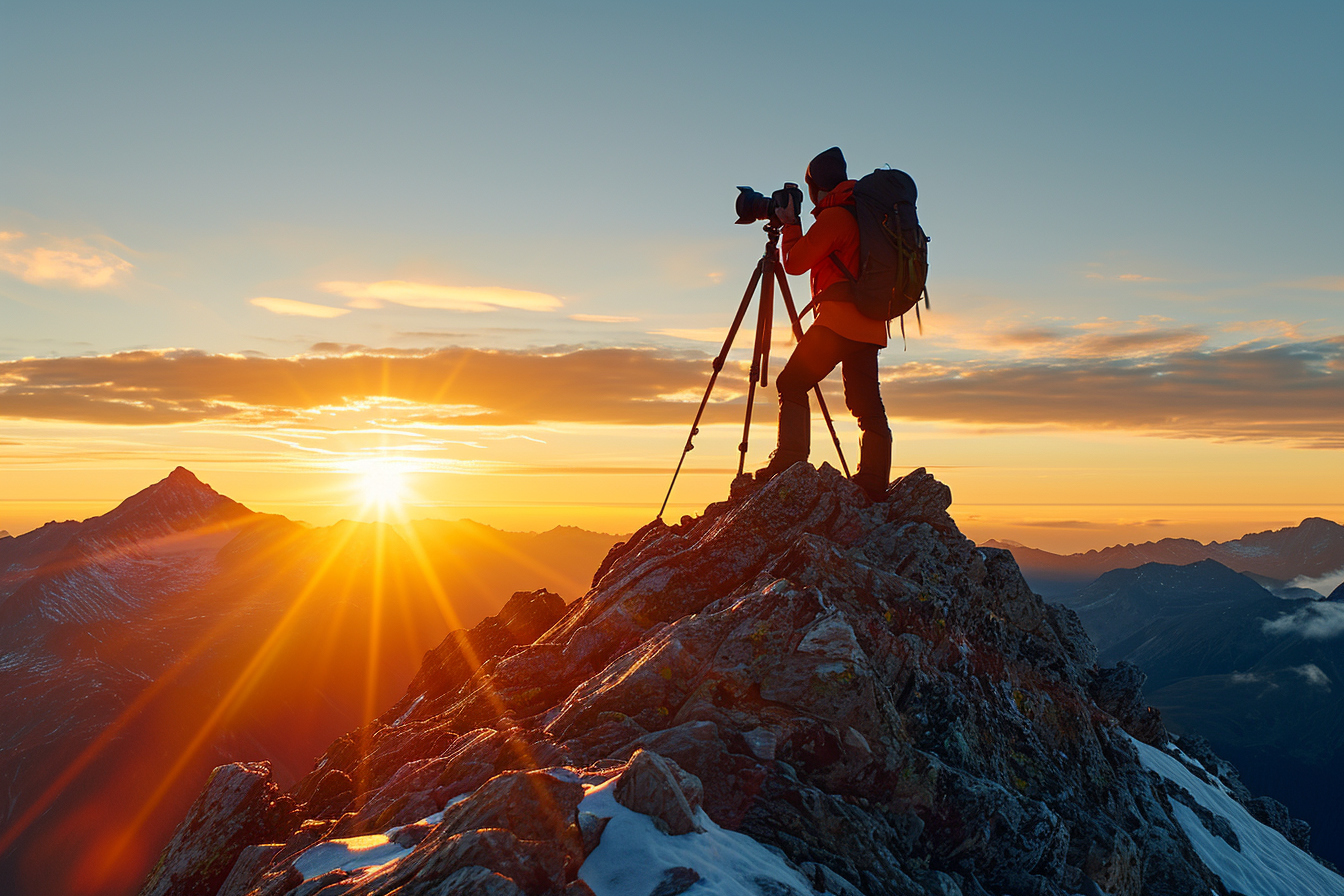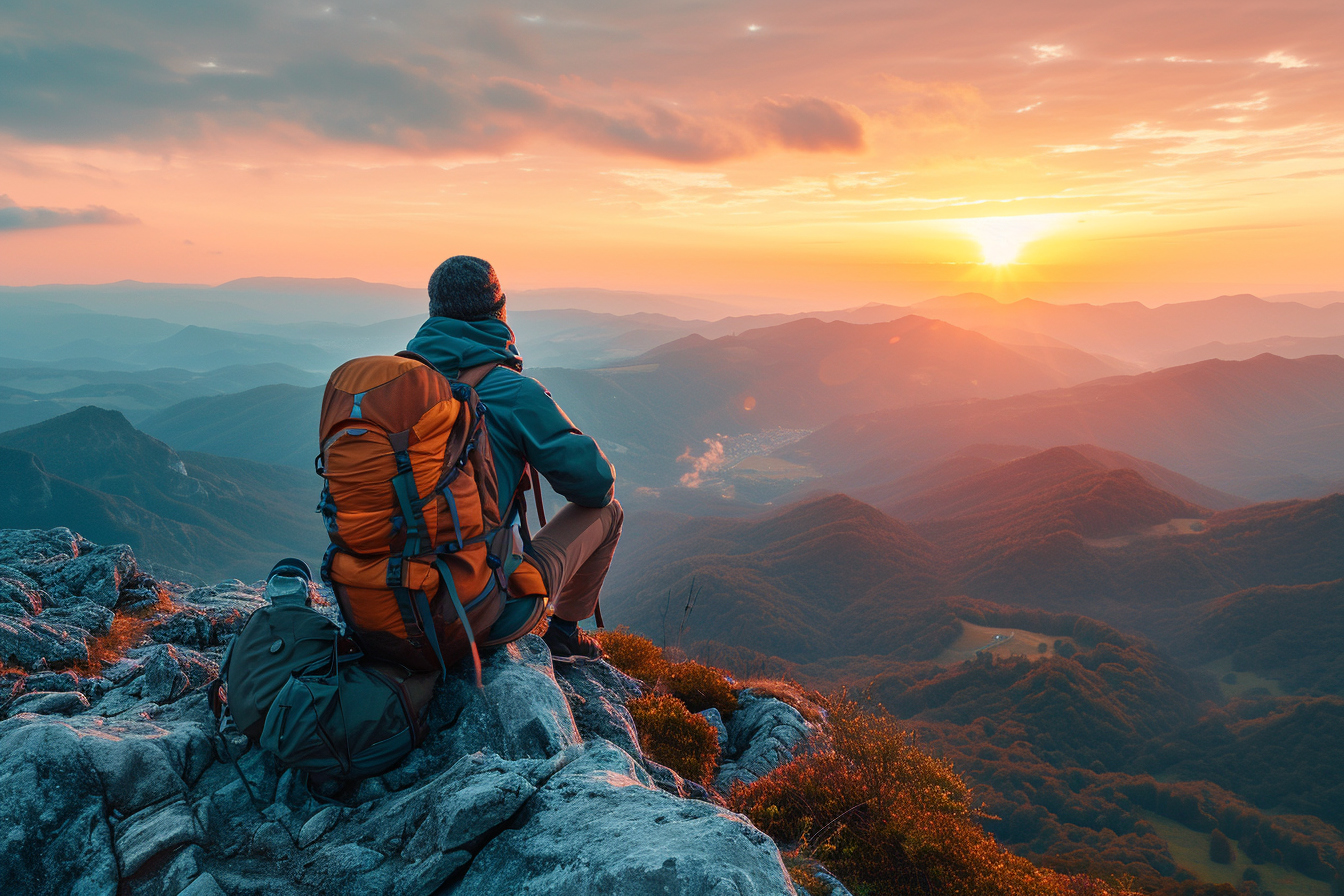
High-altitude landscape photography, a niche within the broader landscape genre, offers photographers the chance to capture the world from an elevated perspective. The unique challenges and rewards of this style require a tailored approach to make the most out of the stunning scenes that await at higher elevations.
Understanding the terrain
Photography at high altitudes often involves rugged terrain and remote locations. Comprehensive familiarity with the geography and weather patterns of such areas is imperative. This knowledge not only helps in finding remarkable vantage points but also ensures safety, which should always be a photographer’s top priority.
Invest Time in Research: Before venturing out, thorough preparation includes studying maps, understanding the topography, and recognizing the potential dangers associated with high-altitude landscapes.
The golden hours
Photographers commonly acknowledge the ‘golden hours’—the time shortly after sunrise or before sunset—as the most opportune moments for capturing the landscape’s natural beauty. The low angle of the sun during these periods produces soft, diffused light that enhances textures and can create dramatic shadows, adding depth and definition to your photographs.
Seek Optimal Lighting Conditions: Planning your photography sessions around these golden hours can be particularly important for high-altitude landscapes where the interplay of light and shadow can transform a scene into something truly spectacular.
Gear selection and preparation
Choosing the right equipment is essential when embarking on high-altitude photography expeditions. Weight and versatility need to be considered alongside the technical capabilities of the gear.
Opt for Lightweight, Durable Equipment: The goal is to balance the need for high-quality optics with the practicalities of trekking in challenging environments.
Camera settings for high-altitude clarity
Capturing the clear, crisp air of high altitudes requires an understanding of the appropriate camera settings. Given the abundance of natural light typically found in these environments, certain adjustments can help ensure images are not overexposed.
Prioritize Small Apertures: Using a smaller aperture (higher f-number) can provide a greater depth of field, ensuring that both the foreground and background remain in focus.
High dynamic range techniques
Many high-altitude landscapes feature a high dynamic range due to the stark contrast between the bright sky and the darker land. Overcoming this contrast is often a matter of technique and technology.
Bracket Your Exposures: By taking multiple shots of the same scene at different exposure levels, you can later blend these images in post-processing to achieve a balanced exposure across the entire scene.
Composition considerations in elevated terrain
Composition is as vital in high-altitude photography as it is in all photography. However, the rules might bend slightly given the expansive scenes often encountered. Using leading lines or the rule of thirds remains important, but there is also a need to guide the viewer through vast spaces.
Incorporate Natural Elements as Focal Points: Look for compelling natural elements—like rock formations, water bodies, or trees—that can serve as focal points to draw in the viewer’s eye and add interest to the composition.
Dealing with weather variability
At high altitudes, weather conditions can change swiftly. It’s not uncommon to experience multiple weather patterns in the span of a few hours. This variability, though potentially hazardous, also provides unique photographic opportunities.
Embrace Changing Conditions: Be prepared to capture transient moments, such as the sudden appearance of mists or the interplay of light and clouds, which can add a dynamic element to your photographs.
Understanding the effects of altitude on the human body
The thin air found at higher elevations can have a substantial impact on the body. It is important for photographers to understand the risks of altitude sickness and take appropriate measures.
Acclimatize Appropriately: Ensure adequate time for your body to adjust to the higher elevations, which can significantly mitigate the risks of altitude sickness and enable a more productive and enjoyable photography experience.
The importance of patience and persistence
Success in high-altitude landscape photography often comes down to the photographer’s willingness to wait for the right conditions and persevere through challenges.
Cultivate a Resilient Mindset: Stay steadfast in your pursuit of the perfect shot, knowing that time and tenacity can lead to awe-inspiring results.
Balancing environmental awareness with photographic activities
While capturing the splendor of high-altitude landscapes, photographers hold a responsibility not to harm the environment they are documenting. This awareness ensures the preservation of these natural wonders for future generations.
Adopt a Leave No Trace Philosophy: Be conscientious about your impact on the environment, taking care to minimize it whenever possible, whether through carrying out all waste or sticking to established trails.
Post-Processing for high-altitude images
In the digital age, the processing of images is an essential step in achieving the desired end result. High-altitude landscapes can benefit from careful post-processing to accentuate certain elements or to recreate the vibrancy and contrast observed in person.
Utilize Editing Software to Enhance Images Judiciously: A subtle touch can often make all the difference, and overprocessing can lead to images that look artificial or lose the natural appeal of the high-altitude environment.
The value of storytelling through high-altitude imagery
Going beyond merely capturing a scene, great photography often tells a story or conveys an emotion. High-altitude landscapes, with their grandeur and scale, offer rich narratives about the Earth’s beauty and the forces that shape it.
Strive to Convey a Deeper Narrative: Every image should aim to evoke a response or convey a tale, adding a layer of depth to the visual spectacle.
Continuous learning and skill enhancement
Photography is an art form that benefits from continuous learning and practice. Engage with the photography community, seek critiques, and experiment with new techniques and perspectives to improve your high-altitude landscape photography.
Remain Open to New Learning Opportunities: Whether through workshops, online courses, or simply trial and error, the ongoing refinement of skills is crucial for capturing exceptional imagery.
Mastering the art of high-altitude landscape photography is a journey that blends technical skills, creative vision, and a profound appreciation for nature’s majesty. Photographers who dedicate themselves to this pursuit stand to not only create stunning visual art but also to experience personal growth through the challenges and triumphs that come with capturing the world from above. As practitioners of this captivating art form continue to ascend to new heights, there will always be undiscovered vistas to explore and immortalize through the lens.

